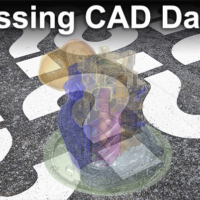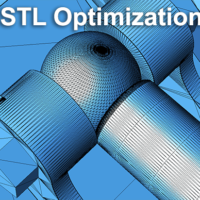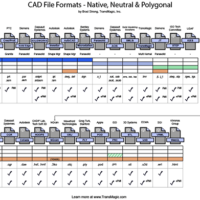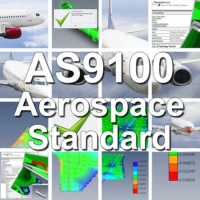


Optimizing STL Output
30 Years of STL From a humble beginning in 1987, when STL was developed by the Albert Consulting Group for 3D Systems, the format has been become a mainstay for 3D printing and has remained virtually unchanged over all these years. The name STL was derived from STereoLithography; STL uses a series of linked triangles to roughly define the surface geometry of a 3D CAD model. General STL Optimization Guidelines Whether you’re using the STL file for 3D printing, machining, or other purposes, you’ll want to set the resolution or mesh density to meet your product or prototype requirements. If your resolution is too rough, you’ll end up losing or...
Protected: Can CAD File Formats Impact Job Quality?
Password Protected
To view this protected post, enter the password below:

AS9100
Aerospace Standard AS9100 is a standard for quality management systems (QMS) for the aerospace sector. This standard is based on ISO 9001, but with additional aerospace-specific requirements added; it is a global standard, and is published by different countries separately. The AS9100 standard was first released in October 1999 by the Society of Automotive Engineers and the European Association of Aerospace Industries, but it continues to evolve; AS9100-C was released in 2009, and AS9100-D was released in September of this year (2016). AS9100 is Concerned with Processes How do the all the processes in the company interact and integrate? Organizations keeping...
Three Alternatives to IGES
In Six Reasons to Avoid IGES Files, we made the case that IGES, at 20 years old, is no longer an optimal format for manufacturing. In this article we’ll look at three categories of format that have proven success in manufacturing. The best alternatives to IGES, in order of preference: #1 – Go Native There is often a reasonable bridge to be found between the format you’ve been given and the CAD system you need to bring it into. The best possible workflow is to get the native file from your customer or supplier, open it in your CAD system and make the necessary edits, and then give it back to the customer or supplier in their native format again. For...
